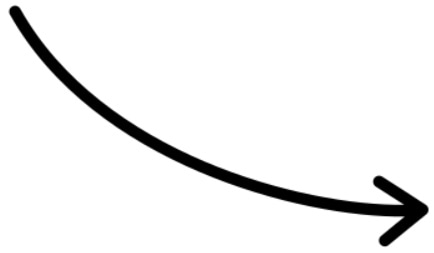Running seems so simple; aren’t humans built to do this anyway? How hard can it be? For something we all did as kids without thinking about it, picking up running as a regular pastime later in life can be surprisingly difficult.
If you have reached the middle of life, or find yourself needing to lose some excess weight, running might be harder than you think. Not only is there a mental hurdle of doing something that may not initially sound fun, but there is also a genuine risk of injury. So, how can running help weight loss?
The answer to whether running helps you lose weight is “yes, usually.” If you are looking to drop pounds, maintaining a calorie deficit is an absolute must. You have to burn more calories than you take in, day after day, to lose weight. Since running helps you burn calories faster, it would stand to reason running will help you lose weight.
Losing weight and keeping it off takes more than just jogging around the block a few times a week. This is especially true if your goal is to lose weight fast. If you have been told by your doctor that you need to lower your body fat levels to stave off serious illness, then you are going to want to do everything you can to lose weight quickly. To do this, you will need to do more than add running to your weekly routine.
You can absolutely lose weight by running. This does not mean running is the only way to lose weight, that you need to run to lose weight, or even that it is the best way. It is likely you will need to add strength training workouts, dietary changes, and other lifestyle modifications to the list if they are going to be serious about fast fat loss.
It is true that running will give you more of a calorie burn than sitting on the couch, but there is more to the weight loss picture than just cardiovascular workouts like running or cycling. For one thing, few of us have the time necessary to burn the number of calories we need to keep burning weight over time. The more you run, the more efficient your body gets at it. This means that to keep burning fat, you will need to run further and further.
For years the conventional wisdom was that increasing the amount of time spent doing cardio workouts was the key to losing weight. Recent evidence paints a different picture. While cardio is still a piece of the puzzle, balancing running or walking with muscle-building workouts will keep you healthier and help you lose weight faster.
The health benefits of weight lifting are centered around adding lean muscle mass. The more muscle mass you have, the faster your body burns calories. This means that even while you are not working out, your body is one step closer to caloric deficit.
Strength training means more than just heading to the gym and hitting the weights. While weight lifting can be helpful, there are other forms of strength training that are even better. High intensity interval training (or HIIT) workouts are short, intense workouts designed to keep your heart rate high for a shorter period of time. These workouts pair short bursts of intense activity with even shorter periods of rest or low-intensity activities to prepare you for the next part of the workout.
If weight loss is your goal, it may be worth it to invest the time, money, and energy up front in building a workout plan that is suited to your body and your goals. This will mean balancing the type, intensity, and frequency of your workouts for optimal results. A few of the types you will want to include are:
With any workout plan, it is important to listen to your body. You will need to learn to push yourself through discomfort as you get in shape, but you will need to know when to rest as well. Finding the right mix between hard workouts and lower intensity runs or yoga sessions can help you allow your body to rest and rebuild so it is ready for later. Even if you find you have to lower the intensity of your training plan, that can be beneficial in the long term if it helps you avoid injury.
A training plan that combines aerobic workouts like running with HIIT workouts or other strength training is the fastest way to lose belly fat. Building muscle through a variety of workouts will help you lose weight faster than simply running.
Running may not be the best option for you if you are significantly overweight, or if you have a history of knee or hip problems. The extra stress on your joints, particularly if you are overweight, can lead to significant injury if you start running too much right out of the gate. Some people find that cycling or swimming are better options if they struggle with knee pain or other lower-limb problems while trying to establish a running routine.
The phrase “slow and steady wins the race” was never more pertinent than when it comes to running. If you are fired up to finally lose weight, you may be tempted to start running as many miles as you can. This could put you on the fast-track to injury, which will quickly land you back on the couch where you started.
The important thing to remember is that working with a personal trainer or a running coach is all but essential if you are starting a running program. There are many mistakes new runners make, and starting out too fast is usually one of them. Having someone who can evaluate your fitness and plan your running workouts for you can help you avoid the injuries that can be common when you are starting out running.
Many people love running because it doesn’t require much equipment and can be done almost anywhere. If you have a gym handy, you can even keep your running routine going in bad weather or throughout the winter by racking up miles on the treadmill.
Though you don’t need much equipment, it is important that you do get one thing right; buying the right kind of running shoes is deeply important for avoiding injury, especially for new runners. After you have built up more strength in your feet and calves, you can potentially get away with a wider range of footwear, but getting shoes that are a proper fit for your stride and foot shape can make all the difference when you are just starting out.
If you are starting out with any exercise program for weight loss, the importance of your diet can’t be understated. Many people think they need to cut the carbs to lose weight, but building your diet around what you are putting on your plate, rather than what comes off of it, may be a better plan.
If you are going to be putting your body through the stress of a new workout plan, especially one that has strength-training as a component, you are going to need to feed your body quality food to keep it healthy. Studies have shown that eating a high-protein diet can help you build muscle faster, which in turn helps you push harder in workouts and burn more calories throughout the day.
Working in a wide range of foods is one of the keys to keeping healthy as you lose weight. Though it can be hard at first to find the time if you aren’t accustomed to spending much time in the kitchen, preparing your own food can help you work more healthy ingredients into your diet. Making the most of your new running program means staying on the lookout for ways to integrate many of the following:
For some people, the keto diet takes the high-protein game a step further. This diet is designed to encourage your body to burn fat in the liver as an energy source, a process known as ketosis, rather than burning the simple sugars and carbohydrates found in your food. By avoiding carbs, you are preventing your body from accessing the cheap, easy energy in some foods. What is more, you are preventing any excess sugar in your diet from being converted to glucose and stored as fat, which is your body’s only way to deal with calories you aren’t using.
One thing to be on the lookout for when it comes to diets and running is the temptation to eat more because you “earned it.” It is likely you will feel quite hungry, especially after hard workouts. This can lead to adding snacks or larger meals in your diet that end up replacing all the calories you burned during your workout. Doing this can offset the benefits of your new workout routine.
That said, refueling your body after a workout is important—you just need to be careful about what kind of food you are eating after your runs. Simple, natural sugars from fruit and protein from a cup of yogurt or some chocolate milk (unless you are lactose intolerant, of course) can be great ways to get a little energy back into your system. Post-run smoothies are also a popular option, but you do need to ensure what you are snacking on is in line with your overall diet.
Establishing a dietary plan to go along with your new running program will help. You just need to make sure your diet is comprehensive enough to cover all your needs, and flexible enough to keep you from having excuses to cheat when you don’t have access to a limited selection of approved foods. Sticking to your new diet can be difficult, but the results will make it worth the effort if you stick with the plan.
No matter what health your weight loss goals are, there is no silver bullet. No single activity, dietary change or lifestyle modification is likely going to be the answer on its own. Eating fewer calories and balancing cardio workouts with weight training to build muscle mass is a more well-rounded picture of what you will need to do to get serious about losing weight.
For some people, though, burning calories by running or other cardio activities can seem like a distant prospect. If you are severely obese or have been diagnosed as being at high risk of heart attack or stroke as a result of your extra body weight, you will need to begin your weight loss program another way. Injuries from training too hard too soon might only set you back further and make it harder to stick with your new running plan.
At True You Weight Loss, we work with people at many different places in their progress toward freedom from excess body weight. For individuals who just need a little guidance to get going or to stay on the path to fitness, our medical nutrition therapy can be the answer. Others may find that their weight loss plan may involve a minimally invasive procedure such as ESG (endoscopic sleeve gastroplasty) or a gastric bypass revision to help them sustain the caloric deficit they need to lose weight.
Wherever you are on that path, request a consultation with True You today if you are interested in finding out more about how we can help you find the freedom of finally losing weight.

Dr. Christopher McGowan, MD, a leader in endobariatrics, specializes in non-surgical obesity treatments and is triple-board-certified in Internal Medicine, Gastroenterology, and Obesity Medicine. Renowned for pioneering endoscopic sleeve gastroplasty (ESG) with over 2,000 procedures, his global influence and research contributions define him as a top expert.



